
The 12th annual Student Tall Building Design Competition, organized by the Council on Tall Buildings and Urban Habitat (CTBUH), has announced this year's winning submissions. Consisting of two jury rounds, five winners were selected from a total of 25 semi-finalists. Students and student teams take home a cash prize and stipend for one representative from each team to attend this year's CTBUH Conference.
According to the CTBUH, the competition's overall goal is "to shed new light on the meaning and value of tall buildings in modern society. The age of the tall building as a single iconic piece of sculpture, standing in isolation from its surroundings, is coming to an end. Designers have a responsibility to ensure that these permanent urban structures engender a future-oriented urban response to the greatest challenges of our time: unprecedented population growth; mass urbanization; climate change; environmental degradation; social, political, and economic change; and the rapid advance of myriad technical innovations." This year's competition theme focused on "Humanizing High Density – People, Nature & the Urban Realm."
Learn more about the five winning projects below. Explore editorial coverage of past winners of the CTBUH Student Tall Building Design Competition here.
First Place: RevitaliZen by Khurtbileg Erdenetsogt, Rachel Truong, and Amir Zarei
From the University of Illinois at Urbana Champaign, Champaign, IL, USA
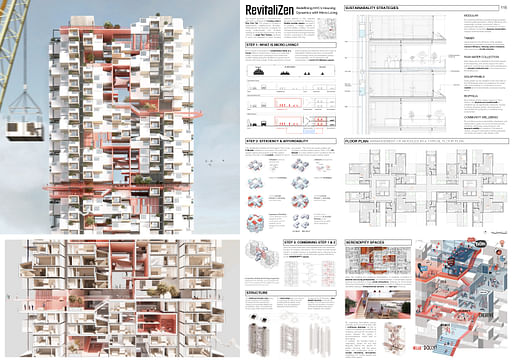
Project Details: "The project presents a comprehensive approach to addressing the housing crisis in New York City, focusing on affordability, and enhancing living qualities. By designing a modular system with a level of flexibility, our goal is to propose a design capable of accommodating sudden economic changes and population fluctuations. This adaptability ensures that the housing landscape remains connected to the dynamic realities of New York City. The design proposal centers around providing affordable and compact living spaces that cater specifically to single-occupancy and double-occupancy units, thereby tackling the scarcity of suitable accommodations."
Second Place: Farm Cloud by Jingfeng Deng, Ang Li, Zhixuan Li, Shanling Xu, and Kaiwei Ye
From Southeast University, Nanjing, China
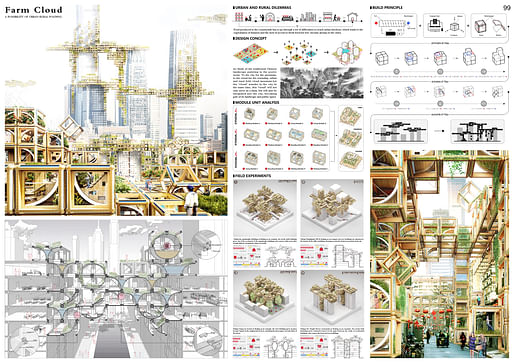
Project Details: "We got the idea from the movie "Food from Heaven". The main character invents a "cloud" that can be manipulated through computer technology. It becomes a climate phenomenon, but one that can be manipulated. Let the "cloud" wander in the city, food will follow, from the sky. From this, we think of the traditional Chinese landscape painting in the poetic scene. To the city for the mountain, to the cloud for the township, urban and rural fold, cloud mountain. At the same time, this "cloud" will not only serve as a farm, but will also be integrated into the city, becoming part of its landscape and public space."
Third Place: The Eco Steps by Phuong Quan Trinh
From Stanford University, Stanford, CA, USA
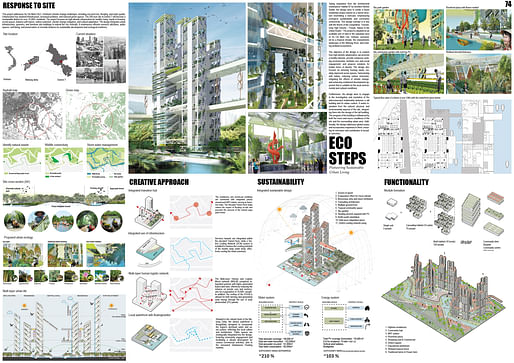
Project Details: "The Eco Steps project represents an innovative approach to urban living, combining a thoughtful response to the site, a creative design approach, sustainability, and functionality. By integrating ecological sustainability, community connectivity, and cultural adaptation, the project paves the way for future developments that prioritize healthy living, resource efficiency, and a harmonious relationship with the environment. The Eco Steps project showcases the potential of high-density urbanization to create livable and sustainable communities for the future."
Fourth Place: The Growing Hub by Scarlet Koon Si Qi
From UCSI University, Kuala Lumpur, Malaysia
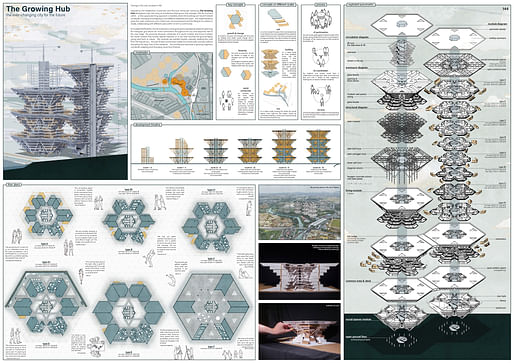
Project Details: "Inspired by the metabolism movement and the local vernacular kampung, The Growing Hub reimagines high-rise living as architecture that grows and changes with the humans within. A time-space planning approach is needed, where the buildings are “never finished”, constantly changing and adapting to the different residents and users. This impermanence gives the users autonomy and control over his environment and the lifestyle he wishes to create, collaborating with different users within to form a community. To increase the flexibility of units and towers, a triangular grid is adopted as a base for planning."
Fifth Place: Utopia Garden by Guodong Sun and Wencai Yu
From South China University of Technology, Guangzhou, China
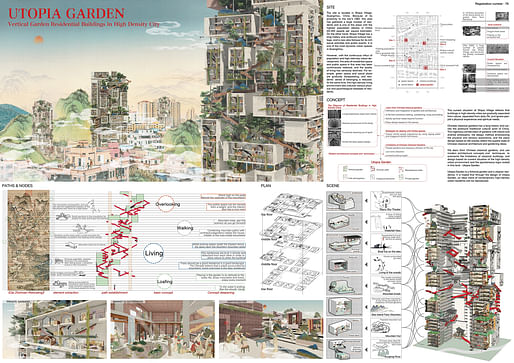
Project Details: "Chinese classical gardens has a long history and carries the profound traditional cultural spirit of China. The ingenious combination of gardens with nature and oriental philosophy, the design method emphasizing the physical and sensory experience, and the place design based on life scenes reflect the superb state of Chinese classical architecture and gardening ideas. Utopia Garden is a fictional garden and a utopian residence. It is hoped that through the design of Utopia Garden, an ideal world of contemporary high-density urban residents can be reproduced."

MICROHOME Kingspan 2024/25
Register by Thu, Feb 13, 2025
Submit by Tue, Mar 18, 2025

Museum of Emotions / Edition #6
Register by Thu, Jan 23, 2025
Submit by Tue, Apr 29, 2025

The Last Nuclear Bomb Memorial / Edition #5
Register by Thu, Jan 16, 2025
Submit by Wed, Feb 19, 2025
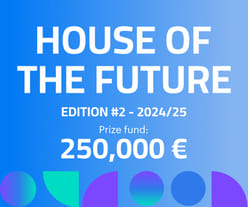
250,000 € Prize / HOUSE OF THE FUTURE 2024/25
Register by Wed, Apr 30, 2025
Submit by Mon, Jun 2, 2025
No Comments